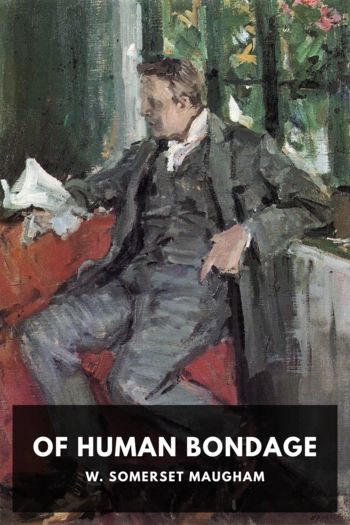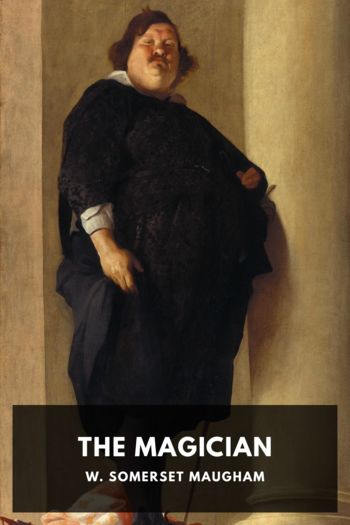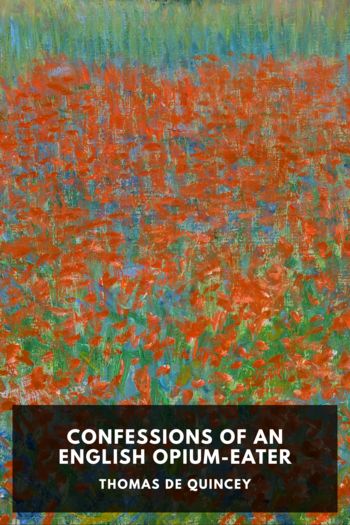On a Chinese Screen by W. Somerset Maugham (best english books to read for beginners .TXT) 📕

Description
On a Chinese Screen was first published in 1922 by Heinemann Publishers, London. Its 58 short vignettes are based on Maugham’s travels along the Yangtze River from 1919 to 1920. Although later editions of the book added the subtitle “Sketches of Life in China,” there are actually only a few descriptions of the places he visited and the local Chinese people he met; rather, Maugham focuses on relaying his encounters with a range of Europeans living and working in the country. Maugham is quite critical of many of them and their lack of interest in, and sometimes disdain, for the country and its people, except for the extent to which their careers and pockets could benefit. His sketches highlight the difficulties that many expatriates encounter while living in a foreign culture.
Read free book «On a Chinese Screen by W. Somerset Maugham (best english books to read for beginners .TXT) 📕» - read online or download for free at americanlibrarybooks.com
- Author: W. Somerset Maugham
Read book online «On a Chinese Screen by W. Somerset Maugham (best english books to read for beginners .TXT) 📕». Author - W. Somerset Maugham
But of course this was a very extraordinary sight indeed and it would have been absurd to miss it. I came across it by pure chance. I was sauntering along a dusty road outside the city wall and by the side of it I saw a number of memorial arches. They were small and undecorated, standing not across the way but along it, close to one another, and sometimes one in front of the other, as though they had been erected by no impulse of gratitude to the departed or of admiration for the virtuous but in formal compliment, as knighthoods on the King’s birthday are conferred on prominent citizens of provincial towns. Behind this row of arches the land rose sharply and since in this part of the country the Chinese bury their dead by preference on the side of a hill it was thickly covered with graves. A trodden path led to a little tower and I followed it. It was a stumpy little tower, ten feet high perhaps, made of rough-hewn blocks of stone; it was cone shaped and the roof was like a Pierrot’s hat. It stood on a hillock, quaint and rather picturesque against the blue sky, amid the graves. At its foot were a number of rough baskets thrown about in disorder. I walked round and on one side saw an oblong hole, eighteen inches by eight, perhaps, from which hung a stout string. From the hole there came a very strange, a nauseating odour. Suddenly I understood what the queer little building was. It was a baby tower. The baskets were the baskets in which the babies had been brought, two or three of them were quite new, they could not have been there more than a few hours. And the string? Why, if the person who brought the baby, parent or grandmother, midwife or obliging friend, were of a humane disposition and did not care to let the newborn child drop to the bottom (for underneath the tower was a deep pit), it could be let down gently by means of the string. The odour was the odour of putrefaction. A lively little boy came up to me while I stood there and made me understand that four babes had been brought to the tower that morning.
There are philosophers who look upon evil with a certain complacency, since without it, they opine, there would be no possibility of good. Without want there would be no occasion for charity, without distress of sympathy, without danger of courage, and without unhappiness of resignation. They would find in the Chinese practice of infanticide an apt illustration of their views. Except for the baby tower there would not be in this city an orphanage: the traveller would miss an interesting and curious sight, and a few poor women would have no opportunity to exercise a beautiful and touching virtue. The orphanage is shabby and bedraggled; it is situated in a poor and crowded part of the city; for the Spanish nuns who conduct it—there are but five of them—think it more convenient to live where they may be most useful; and besides, they have not the money to build commodious premises in a salubrious quarter. The institution is supported by the work, lace and fine embroidery, which they teach the girls to do, and by the alms of the faithful.
Two nuns, the Mother Superior and another, showed me what there was to see. It was very strange to go through the whitewashed rooms, workrooms, playrooms, dormitories, and refectory, low, cool, and bare; for you might have been in Spain, and when you passed a window you half expected to catch a glimpse of the Giralda. And it was charming to see the tenderness with which the nuns used the children. There were two hundred of them and they were, of course, orphans only in the sense that their parents had abandoned them. There was one room in which a number were playing, all of the same age, perhaps four, and all of the same size; with their black eyes and black hair, their yellow skins, they all looked so much alike that they might have been the children of a Chinese Old Woman who lived in a Shoe. They crowded round the nuns and began to romp with them. The Mother Superior had the gentlest voice I ever heard, but it became gentler still when she joked with the tiny mites. They nestled about her. She looked a very picture of charity. Some were deformed and some were diseased, some were puny and hideous, some were blind; it gave me a little shudder: I marvelled when I saw the love that filled her kind eyes and the affectionate sweetness of her smile.
Then I was taken into a parlour where I was made to eat little sweet Spanish cakes and given a glass of Manzanilla to drink, and when I told them that I had lived in





Comments (0)